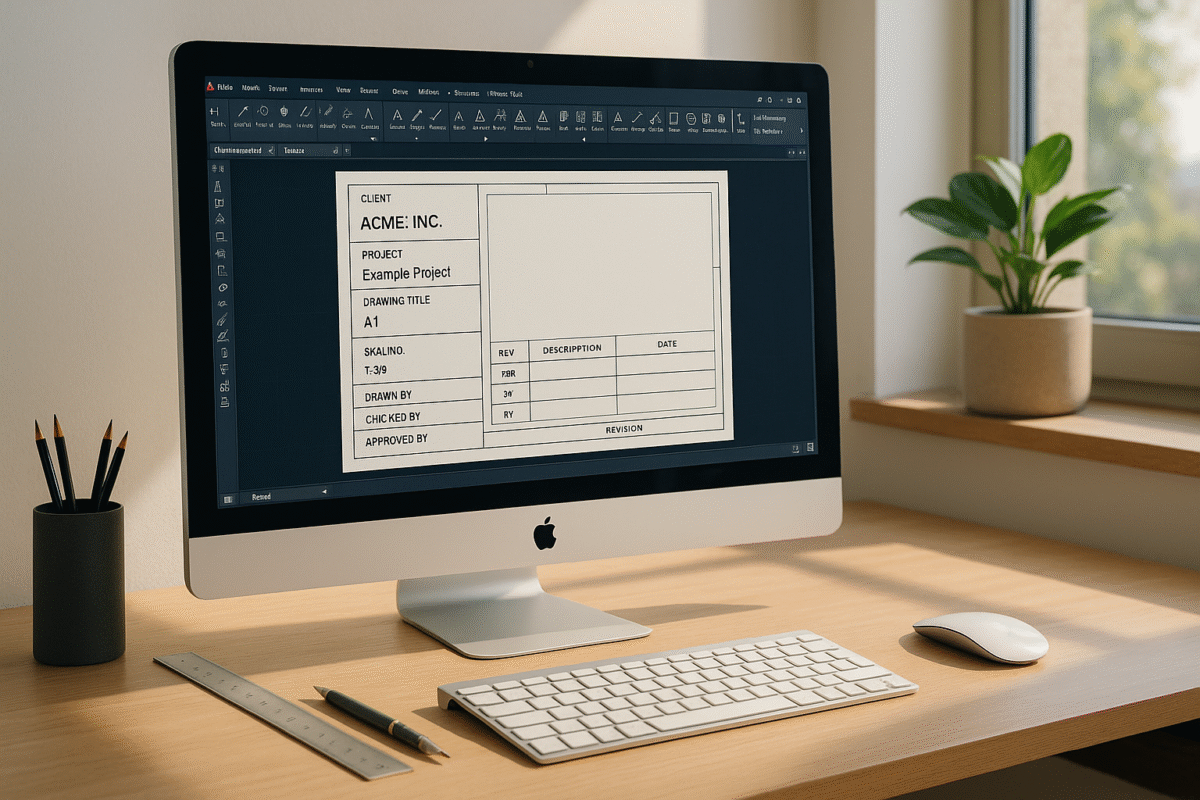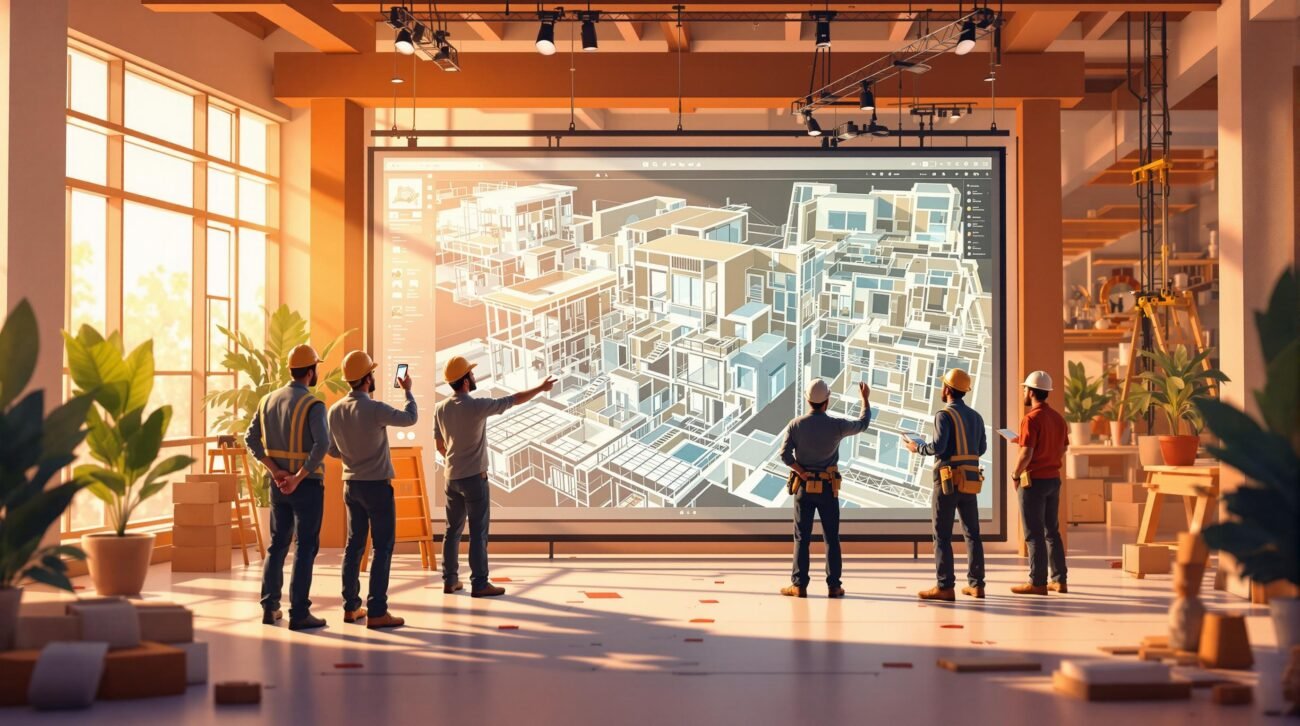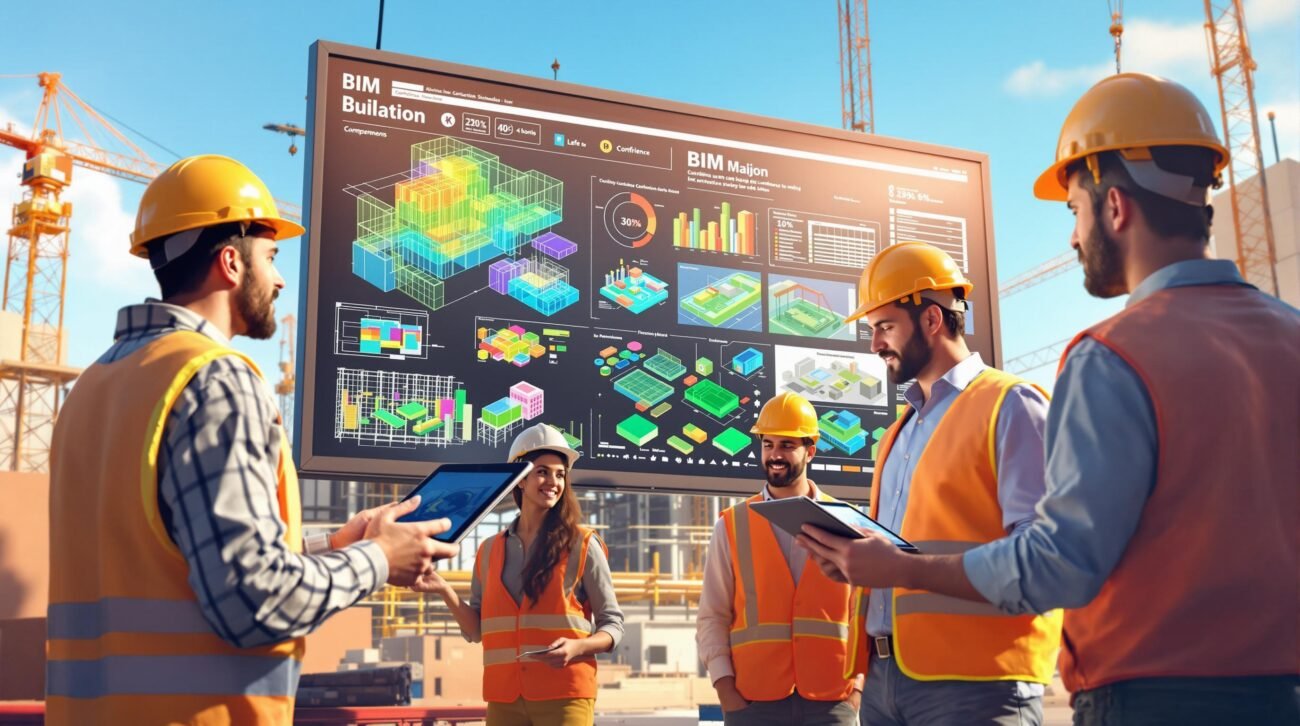Clash Detection in BIM: Process and Standards
Clash Detection in BIM: Process and Standards
Clash detection in BIM saves time, money, and prevents construction errors. By identifying conflicts in 3D models before construction, BIM reduces costly rework by up to 70% and accelerates project timelines. Here’s what you need to know:
- What it does: Detects clashes in architectural, structural, and MEP systems using 3D models.
- Types of clashes: Hard (physical overlaps), Soft (clearance issues), Workflow (scheduling conflicts).
- Proven results: Case studies show millions saved in rework costs and weeks shaved off schedules.
- Standards: ISO 19650 ensures consistency and quality in clash detection processes.
- Tools and methods: Use BIM software, regular clash checks, and structured workflows for success.
Clash detection is a critical step for efficient, cost-effective construction projects. Let’s dive into how it works and why it’s essential.
What is Clash Detection
How Clash Detection Works
Clash detection in BIM is a process used to spot and fix conflicts before construction begins, helping to save both time and money.
Combining BIM Models
The process begins by merging 3D models from various disciplines – like architectural, structural, and MEP – into one unified BIM model. This is done in a Common Data Environment (CDE), where all models are brought together. Parameters and rules are set to ensure everything aligns and integrates correctly. Once combined, the model is ready to reveal potential conflicts.
Types of Clashes
Clashes are grouped into three main categories, each requiring a specific approach to resolve:
| Clash Type | Description | Common Examples | Resolution Method |
|---|---|---|---|
| Hard Clash | Physical overlaps between components | Structural beam colliding with ductwork | Adjusting or redesigning components |
| Soft Clash | Issues with clearances or tolerances | Pipe placed too close to electrical conduit | Modifying spacing and layouts |
| Workflow Clash | Problems with scheduling or sequencing | Installation planned before structural changes | Reworking the project timeline |
Spotting these clashes early – during design or preconstruction – can prevent expensive fixes and delays later.
Solving Clash Issues
Specialized BIM software generates clash reports that highlight problem areas, their severity, and the components involved. These reports are reviewed by stakeholders, who prioritize and assign fixes. The models are then updated, the detection process is repeated, and changes are documented to ensure all issues are resolved.
This step-by-step approach can reduce construction rework caused by design and engineering mistakes by as much as 70%.
Clash Detection Standards
Clash detection in BIM projects depends on following strict standards to ensure consistency and quality. These standards provide a clear framework for managing clash detection throughout a project’s lifecycle.
Industry Guidelines
One of the most widely recognized standards for BIM clash detection is ISO 19650. This global standard outlines best practices for managing information throughout the lifecycle of built assets. It builds on earlier frameworks like the UK’s PAS 1192, adapting them for use worldwide.
Implementation of ISO 19650 varies across regions:
| Region | Implementation Requirements | Key Features |
|---|---|---|
| United Kingdom | Required for public infrastructure projects | Based on UK 1192 standards |
| United States | Aligned with NBIMS guidelines | Focuses on structured information exchange |
| European Union | Supports EU BIM Task Group mandates | Ensures compliance with digital construction practices |
“ISO 19650 represents the international standard for organizing and digitizing information in construction and civil engineering works through BIM.” – Hari Krishan, Author
A key part of ISO 19650 compliance is the use of a Common Data Environment (CDE). As defined by BIM Wiki: “The common data environment (CDE) is the single source of information used to collect, manage and disseminate documentation, the graphical model and non-graphical data for the whole project team.”
These standards establish a foundation for regular and organized clash detection.
Regular Clash Checks
To keep models accurate and reliable, regular clash checks are critical. These checks should be done at important project milestones and follow a structured process.
For effective clash detection, the following practices are essential:
- Use unique identifiers for each information container
- Maintain consistent naming conventions, accurate classification, and strict version control
Coordination meetings are also a key part of this process. These meetings bring stakeholders together to:
- Go over clash reports and prioritize issues
- Assign tasks for resolving clashes
- Monitor progress on previously identified problems
- Update the BIM Execution Plan (BEP) as necessary
This organized approach ensures clash detection is fully integrated into the project workflow.
sbb-itb-0af4724
Results of Good Clash Detection
Cost and Time Savings
Identifying clashes early with BIM tools can save both money and time by avoiding design conflicts. For instance, a $230 million design-build food project in California achieved major cost savings using Autodesk BIM 360 and Procore. Here’s a breakdown of the savings:
| System Component | Cost Savings |
|---|---|
| Structural Steel | $420,750 |
| Conveyor Equipment | $283,500 |
| Electrical Power | $269,100 |
| Storage Racking | $213,750 |
| Plumbing Pressure Piping | $171,950 |
| Mechanical Duct | $145,125 |
| Refrigeration Duct | $135,000 |
By investing $200,000 in Virtual Design and Construction (VDC), the project avoided $2.22 million in rework costs and cut general conditions expenses by $542,000, thanks to a one-month schedule reduction. Beyond the financial and scheduling benefits, early clash detection also strengthens collaboration among team members.
Better Team Communication
Clash detection promotes clear communication by creating a shared, reliable source of information for all stakeholders. This approach offers several advantages:
- 3D models provide a clear view of potential conflicts, making it easier to understand issues and explore solutions.
- Teams from different disciplines can coordinate more effectively by using shared resources and aligning their plans.
- Streamlined workflows allow for smoother collaboration across diverse teams.
Addressing clashes early ensures that teams stay on the same page, improving communication and coordination while resolving conflicts before they escalate. This proactive approach helps keep projects on track and running smoothly.
BIM Heroes Services

By leveraging a well-established clash detection process and industry standards, BIM Heroes provides expert support to improve project efficiency and outcomes.
Clash Detection Support
BIM Heroes utilizes BIM 360 to identify and resolve system conflicts early, preventing costly issues down the line. With over six years of experience and involvement in more than 100 projects, their process includes:
- Model coordination and analysis with BIM 360
- Detailed clash reports featuring actionable solutions
- Real-time collaboration to address issues quickly
- Integrated workflows for smoother project execution
BIM Services Offered
BIM Heroes provides a range of services designed to meet different project requirements:
| Service Model | Description | Best Suited For |
|---|---|---|
| Dedicated Team | Full-time BIM professionals | Long-term projects needing ongoing clash detection |
| Fixed Price | Pre-defined deliverables | Projects with clearly scoped clash detection tasks |
| Hourly Engagement | Flexible, on-demand support | Short-term or ad-hoc clash detection needs |
A Director of Architecture in New York shared their experience:
“BIM Heroes was able to assist their Architectural Team on a range of different projects, excelling in their communication, speed, and overall quality of deliverable.”
BIM Heroes enhances clash detection with additional services, including:
- BIM 360 setup for efficient detection
- Staff training on clash identification tools
- Workflow alignment with project-specific processes
- Compliance with international standards
Their use of BIM 360’s analytics tools further streamlines construction workflows. Additionally, their expertise spans multiple platforms like Revit, AGACAD, and Enscape, ensuring thorough clash detection at every project stage.
These flexible service models allow BIM Heroes to meet a variety of project needs while maintaining global standards.
Summary
Clash detection in BIM plays a key role in ensuring project success. Statistics reveal that 35-40% of construction rework arises from coordination issues and clashes, leading to an average increase in project costs of 10-15% if left unresolved. These numbers highlight how critical effective clash detection is for keeping projects on track and within budget.
Main Points
The benefits of clash detection are evident in real-world projects. For example, a $230 million design-build food facility in California achieved impressive results:
- Filtered 932 high-priority clashes out of 2,000 total issues
- Saved $2.22 million in rework costs
- Reduced the project schedule by one month, saving $542,000
- Delivered total net savings of $2.55 million, equating to a 10x ROI on VDC labor efforts
“Proactive BIM coordination not only prevented costly issues but delivered real savings – over $2.5 million in cost and time savings on this project alone. VDC investments are essential for staying competitive.”
Beyond cost savings, effective clash detection can cut up to 70% of construction rework caused by design and engineering errors. This is especially impactful since construction projects often take 20% longer than planned, and disputes can extend timelines by an average of 17 months, costing $33 million per incident.
To maximize the benefits, organizations should:
- Group and categorize clashes systematically
- Establish clear communication protocols among all stakeholders
- Perform regular model validation
- Implement strong change management processes
These practices help ensure projects are completed with high quality and efficiency.











